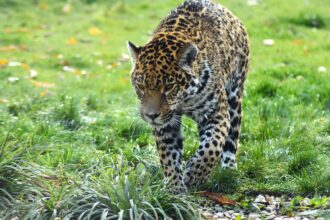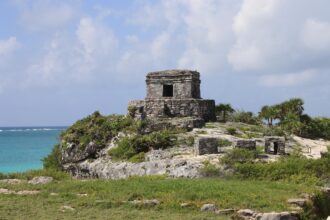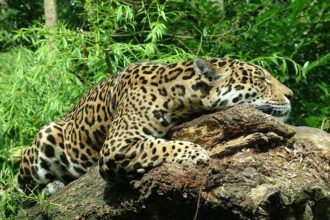Habitat Loss and Jaguar Survival: The Crucial Role of Tulum
Habitat loss has emerged as one of the most pressing threats to global biodiversity, significantly impacting various wildlife species, including the iconic jaguar (Panthera onca). This majestic feline, once prevalent across diverse ecosystems, is now facing critical challenges due to deforestation, urbanization, and agricultural expansion. As tropical rainforests continue to succumb to human activity, areas such as Tulum, Mexico, play a vital role in the fight for jaguar survival.
Understanding Habitat Loss
Habitat loss refers to the process through which natural environments are destroyed or altered, leading to a reduction in the capacity of ecosystems to support wildlife. In the case of jaguars, their natural habitats consist primarily of tropical rainforests, wetlands, and grasslands, which are being increasingly fragmented by human development. According to a report by the World Wildlife Fund (WWF), nearly 50% of the world’s forests have been lost since the beginning of the 20th century.
In Mexico, the clearing of forests for agriculture and urban development threatens jaguar populations by breaking their traditional ranges into smaller, isolated patches. These fragmented habitats pose significant challenges, as jaguars require vast territories to hunt and breed.
The Importance of Tulum’s Ecosystem
Tulum, located on the Caribbean coast of Mexico’s Yucatan Peninsula, is an area of ecological significance. Surrounded by the expansive Sian Ka’an Biosphere Reserve, Tulum provides essential habitats for numerous wildlife species, including jaguars.
The jaguar’s presence in Tulum is indicative of a robust ecosystem, as these apex predators require healthy prey populations and intact habitats for survival. Key prey items include peccaries, deer, and various smaller mammals, all of which thrive in undisturbed environments. Unfortunately, Tulum is also facing rapid development due to its rising popularity as a tourist destination, which puts additional pressure on its ecosystems.
Conservation Efforts in Tulum
Efforts to combat habitat loss in Tulum are crucial for sustaining the local jaguar population. Several organizations and government initiatives focus on conservation strategies aimed at preserving both the jaguar and its habitat.
-
Protected Areas: The establishment of protected areas, such as the Sian Ka’an Biosphere Reserve, helps to safeguard vital habitats from the encroachment of urbanization and farming. Sian Ka’an is not only a UNESCO World Heritage Site but also serves as a critical corridor for wildlife, allowing jaguars to roam and find mates across a larger territory.
-
Ecotourism: Sustainable ecotourism presents an opportunity for local communities to benefit economically while encouraging the preservation of natural habitats. Tulum has increasingly attracted visitors seeking eco-friendly experiences, which promotes the importance of conservation. Local businesses are emphasizing the significance of jaguar conservation, striving to educate tourists on the role of these predators in healthy ecosystems.
-
Community Engagement: Local community involvement is essential for successful conservation efforts. Initiatives that involve residents in monitoring and protecting wildlife help to foster a sense of ownership and responsibility towards the conservation of jaguars and their habitats. Programs that empower communities to become eco-guides or participate in wildlife conservation offer economic incentives aligned with environmental preservation.
- Environmental Education: Educational programs targeting local schools and communities help raise awareness about the ecological importance of jaguars and the ecosystems they inhabit. Understanding the consequences of habitat destruction leads to increased local advocacy for conservation and more sustainable practices.
Threats Beyond Habitat Loss
Although habitat loss remains the primary threat to jaguars, other factors exacerbate their decline. Poaching, human-wildlife conflict, and climate change also pose significant challenges in Tulum and surrounding areas.
-
Poaching: In addition to habitat destruction, illegal hunting poses a grave danger to jaguars. Poachers target jaguars for their beautiful pelts and other body parts. Strengthening law enforcement and increasing penalties for wildlife crime are crucial steps needed to deter poaching.
-
Human-Wildlife Conflict: As human populations expand into jaguar territories, interactions between humans and jaguars become more frequent. Livestock predation can lead to retaliation killings of jaguars, further endangering their populations. Promoting non-lethal methods to protect livestock, such as predator-proof enclosures, can reduce conflict and benefit both farmers and jaguars.
- Climate Change: The effects of climate change, such as rising temperatures and altered precipitation patterns, can adversely impact the ecosystems that support jaguars. Protecting large areas of connected habitats is essential for allowing wildlife to adapt to these changes, ensuring that jaguars continue to thrive in the face of shifting environmental conditions.
The Role of Habitat Restoration
Beyond the current conservation initiatives in Tulum, habitat restoration efforts are equally critical. Reforestation projects aimed at restoring degraded areas can create buffer zones that allow wildlife to recover and thrive. Restoring native vegetation not only benefits jaguars but also helps mitigate climate change by sequestering carbon.
Innovative strategies, such as the implementation of wildlife corridors, can facilitate safe passage between fragmented habitats, enhancing gene flow and reducing inbreeding within populations. This is especially crucial for species like jaguars, which require large territories and maintain critical ecological balance.
Moving Forward
Tulum stands as a critical bastion for jaguar conservation amidst growing threats of habitat loss. The region’s collaborative efforts between government, non-profits, and local communities highlight a proactive approach to safeguarding these magnificent creatures. By placing emphasis on sustainable tourism, community engagement, habitat protection, and restoration, Tulum can serve as a model for effective wildlife conservation in the face of ongoing environmental challenges.
Investing in ecological resilience in Tulum not only supports jaguars but also contributes to the broader health of the planet. By recognizing the interdependence of humans and nature, Tulum can cultivate a future where jaguars and their habitats can thrive together, ensuring the survival of one of the world’s most magnificent predators.







